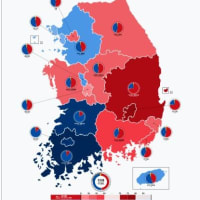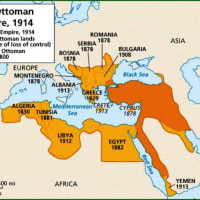USA 2006 - 2010 : The Fall of the Dollar « Wall » or the end of the other Superpower born in 1945
At the end of 2005, LEAP/E2020 elaborated a medium-term anticipation scenario concerning the United-States. Using the same conceptual tools that gave birth to the now famous “Europe 2009” scenario – “When the grand-sons of Pétain, Hitler, Mussolini, Franco and Staline will take over the EU”. This new scenario is entitled : “USA 2010 – When the Washington Wall falls”.
This scenario was released on January 15 in the first issue of LEAP/E2020’s confidential letter, the GlobalEurope Anticipation Bulletin, at a time when nearly all experts firmly believed in the sustainability of the Dollar’s strength, in the structural superiority of the US economy, in the harmlessness of US deficits, in the solidity of NATO and the transatlantic axis, and in the US military and diplomatic capacity in handling properly the occupation of Iraq, the nuclear crisis with Iran and the North-Corean case.
A synthesis of this scenario goes as follows :
Assumption 1: The current period reflects in particular the end of the world order founded after World War II.
Assumption 2: The End of the Cold war triggered an increasing objective disconnection between most of planet and the evolution of the two major players of this Cold war: the USSR and the United States.
Assumption 3: Globalisation has considerably weakened the capacity of each State to influence in a decisive way its own evolution, and collectively it has strongly reduced the possibility of preventing / managing major crises.
Assumption 4: A "super power" cannot durably see its external credibility (cultural, moral and intellectual attractiveness, and military power) and its internal credibility (institutional legitimacy, capacity to embody its own speech) being strongly reduced without soon seeing the basis of its power and influence called into question.
Assumption 5: The Fall of the Iron Curtain in 1989 which led to the disappearance of the USSR three years later, is the result of a historical evolution which affects the United States also.
/…
First series: USSR
1. 1979 - The USSR invades Afghanistan, and loses all its remaining prestige as "protector" of the Third World as opposed to the First world (Western); the world witnesses the Red Army’s incapacity to control and solve the conflict triggered by this invasion.
2. 1986 – The Chernobyl catastrophy shows to the world Soviet society’ and infrastructures’ decay; the Russians themselves and a large majority of the “satellite” countries become aware of the obsolescence of the Soviet power and of its disinterest for its own people.
3. 1989 - Fall of the Berlin Wall soon followed by the general fall of the Iron Curtain.
4. 1992 - End of the USSR.
Second series: USA
1. 2001-2003 – The terrorist attacks on New-York and Washington put an end to the myth of invulnerability of the US territory and trigger the invasion of Iraq, leading to a loss of the moral leadership acquired along the last decades and highlighting the US army’s incapacity to control and solve the conflict triggered by this invasion.
2. 2005 – The Katrina catastrophy destroys one of the very large cities of the US, highlighting a complete lack of prevision, a disinterest for unprivileged classes, the scope of hidden « poverty » and the disorganisation of relief systems.
The two questions raised by comparing these two series of events are the following:
3. What is the Berlin Wall for the US ? Or in other words: What is the “Washington Wall” enabling the country to keep its grasp on what is at the centre of its power?
4. When will it fall?
Europe 2020 suggests the following answers:
. The “Washington Wall” is the Dollar, and the fall of the “Washington Wall” will consist of a serious loss of confidence in the Dollar.
. Considering the USSR series of events, a probable date ranges between 4 and 7 years from now. Europe 2020 thus symbolically chose the date of 2010.
Precision: The current evolutions in the financial, monetary and economic fields, in particular the increasing American deficits, the emergence of the Euro as a partial alternative, the immense commercial and monetary dependence of the United States with respect to some of its most ferocious competitors like China,… do not make it possible to invalidate such a scenario. Quite the contrary.
http://www.europe2020.org/en/section_global/070906.html
【私のコメント】
ソ連を西側文明の脅威から守ってきたのがベルリンの壁に代表される鉄のカーテンであるとするならば、米国経済を日本やアジア、欧州の経済から守ってきたのがドルの国際基軸通貨としての地位であるというEurope2020の認識には賛成する。しかし、「ドルの壁の崩壊が2010年」という部分には疑問がある。果たしてあと4年もドルは国際基軸通貨であり続けることができるだろうか?
ロシア・イランなどでドル以外の通貨による石油決済の企てが進行しつつある。米国のドルの覇権は、中東と日本に軍事基地を置いて中東産油国と日本を事実上占領していることがほとんど唯一の支えとなっているが、イラクからの撤退を主張する声が米国内で高まっており、今年11月の中間選挙の結果により政策転換が行われる可能性は高いのではないだろうか?そして、米軍がイラクから撤退することが引き金になって、早ければ今年中にもドルが暴落(1ドル80円とか50円程度まで)する可能性も考えられる。
無論、今年もしドルが暴落するとしてもすぐに紙屑になるわけではない。ドルの暴落と超大国米国の終焉は時間をかけて進行して行くはずである。しかし、今年秋の中間選挙後、あるいはそれ以前にドル暴落が始まる可能性は否定できないと思われる。
At the end of 2005, LEAP/E2020 elaborated a medium-term anticipation scenario concerning the United-States. Using the same conceptual tools that gave birth to the now famous “Europe 2009” scenario – “When the grand-sons of Pétain, Hitler, Mussolini, Franco and Staline will take over the EU”. This new scenario is entitled : “USA 2010 – When the Washington Wall falls”.
This scenario was released on January 15 in the first issue of LEAP/E2020’s confidential letter, the GlobalEurope Anticipation Bulletin, at a time when nearly all experts firmly believed in the sustainability of the Dollar’s strength, in the structural superiority of the US economy, in the harmlessness of US deficits, in the solidity of NATO and the transatlantic axis, and in the US military and diplomatic capacity in handling properly the occupation of Iraq, the nuclear crisis with Iran and the North-Corean case.
A synthesis of this scenario goes as follows :
Assumption 1: The current period reflects in particular the end of the world order founded after World War II.
Assumption 2: The End of the Cold war triggered an increasing objective disconnection between most of planet and the evolution of the two major players of this Cold war: the USSR and the United States.
Assumption 3: Globalisation has considerably weakened the capacity of each State to influence in a decisive way its own evolution, and collectively it has strongly reduced the possibility of preventing / managing major crises.
Assumption 4: A "super power" cannot durably see its external credibility (cultural, moral and intellectual attractiveness, and military power) and its internal credibility (institutional legitimacy, capacity to embody its own speech) being strongly reduced without soon seeing the basis of its power and influence called into question.
Assumption 5: The Fall of the Iron Curtain in 1989 which led to the disappearance of the USSR three years later, is the result of a historical evolution which affects the United States also.
/…
First series: USSR
1. 1979 - The USSR invades Afghanistan, and loses all its remaining prestige as "protector" of the Third World as opposed to the First world (Western); the world witnesses the Red Army’s incapacity to control and solve the conflict triggered by this invasion.
2. 1986 – The Chernobyl catastrophy shows to the world Soviet society’ and infrastructures’ decay; the Russians themselves and a large majority of the “satellite” countries become aware of the obsolescence of the Soviet power and of its disinterest for its own people.
3. 1989 - Fall of the Berlin Wall soon followed by the general fall of the Iron Curtain.
4. 1992 - End of the USSR.
Second series: USA
1. 2001-2003 – The terrorist attacks on New-York and Washington put an end to the myth of invulnerability of the US territory and trigger the invasion of Iraq, leading to a loss of the moral leadership acquired along the last decades and highlighting the US army’s incapacity to control and solve the conflict triggered by this invasion.
2. 2005 – The Katrina catastrophy destroys one of the very large cities of the US, highlighting a complete lack of prevision, a disinterest for unprivileged classes, the scope of hidden « poverty » and the disorganisation of relief systems.
The two questions raised by comparing these two series of events are the following:
3. What is the Berlin Wall for the US ? Or in other words: What is the “Washington Wall” enabling the country to keep its grasp on what is at the centre of its power?
4. When will it fall?
Europe 2020 suggests the following answers:
. The “Washington Wall” is the Dollar, and the fall of the “Washington Wall” will consist of a serious loss of confidence in the Dollar.
. Considering the USSR series of events, a probable date ranges between 4 and 7 years from now. Europe 2020 thus symbolically chose the date of 2010.
Precision: The current evolutions in the financial, monetary and economic fields, in particular the increasing American deficits, the emergence of the Euro as a partial alternative, the immense commercial and monetary dependence of the United States with respect to some of its most ferocious competitors like China,… do not make it possible to invalidate such a scenario. Quite the contrary.
http://www.europe2020.org/en/section_global/070906.html
【私のコメント】
ソ連を西側文明の脅威から守ってきたのがベルリンの壁に代表される鉄のカーテンであるとするならば、米国経済を日本やアジア、欧州の経済から守ってきたのがドルの国際基軸通貨としての地位であるというEurope2020の認識には賛成する。しかし、「ドルの壁の崩壊が2010年」という部分には疑問がある。果たしてあと4年もドルは国際基軸通貨であり続けることができるだろうか?
ロシア・イランなどでドル以外の通貨による石油決済の企てが進行しつつある。米国のドルの覇権は、中東と日本に軍事基地を置いて中東産油国と日本を事実上占領していることがほとんど唯一の支えとなっているが、イラクからの撤退を主張する声が米国内で高まっており、今年11月の中間選挙の結果により政策転換が行われる可能性は高いのではないだろうか?そして、米軍がイラクから撤退することが引き金になって、早ければ今年中にもドルが暴落(1ドル80円とか50円程度まで)する可能性も考えられる。
無論、今年もしドルが暴落するとしてもすぐに紙屑になるわけではない。ドルの暴落と超大国米国の終焉は時間をかけて進行して行くはずである。しかし、今年秋の中間選挙後、あるいはそれ以前にドル暴落が始まる可能性は否定できないと思われる。




























※コメント投稿者のブログIDはブログ作成者のみに通知されます